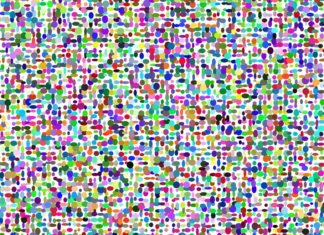The Internet of Things (IoT) has emerged as a revolutionary paradigm that interconnects a myriad of devices, sensors, and systems, enabling them to communicate, exchange data, and collaborate seamlessly through the global network. At its core, IoT represents a dynamic ecosystem where everyday objects are endowed with the ability to collect, transmit, and receive data, ushering in a new era of unprecedented convenience, efficiency, and insights across various industries and domains. This transformative concept transcends the traditional boundaries of technology and ushers in an age where inanimate objects become intelligent, responsive participants in the digital landscape, profoundly shaping the way we interact with our surroundings, businesses operate, and societies function.
At its essence, the Internet of Things refers to the interconnection of a vast array of devices, objects, and systems through the internet, enabling them to share data, communicate, and interact with each other without human intervention. This interplay between the physical and digital realms opens up a universe of possibilities, empowering devices to sense, analyze, and respond to their environment in real time. Through an intricate web of connectivity, IoT creates a symbiotic relationship between the virtual and physical worlds, allowing for the seamless exchange of information that can be harnessed to improve decision-making, optimize processes, enhance user experiences, and drive innovation across diverse sectors.
IoT encompasses a diverse spectrum of interconnected entities, ranging from the ordinary household items like thermostats, refrigerators, and lighting systems, to industrial machinery, smart cities’ infrastructure, healthcare devices, and more. Central to this phenomenon are the sensors and actuators embedded within these objects, which enable them to gather data from their environment and initiate actions based on the insights garnered. These sensors detect various parameters such as temperature, humidity, light, motion, and even biometric data, transforming analog signals into digital information that can be transmitted across networks for analysis and interpretation.
The true magic of IoT resides in its ability to generate meaningful insights from the vast streams of data collected by these interconnected devices. As they communicate with each other and transmit data to centralized cloud platforms or edge computing systems, sophisticated algorithms and analytics processes can derive valuable patterns, trends, and correlations. These insights serve as the foundation for informed decision-making, predictive maintenance, and optimization of processes that would otherwise be reliant on traditional, manual methods.
Moreover, the ubiquity of IoT has sparked a paradigm shift in consumer experiences, redefining the way individuals interact with their surroundings. Smart homes, equipped with an array of interconnected devices, offer residents unprecedented control and automation of various aspects of their living spaces. From remotely adjusting thermostat settings and managing home security to even replenishing groceries, IoT-enabled homes provide a level of convenience that was once relegated to the realm of science fiction. Similarly, wearable devices that monitor health metrics in real-time have transformed personal well-being management, granting individuals insights into their physical condition and prompting timely interventions when needed.
In the industrial landscape, the adoption of IoT has given rise to the concept of Industry 4.0, heralding a new era of smart manufacturing and logistics. The integration of IoT technologies into factories and supply chains has engendered the creation of smart factories, where machines communicate and collaborate autonomously to streamline production processes, monitor equipment health, and optimize resource utilization. This not only enhances operational efficiency but also reduces downtime by enabling predictive maintenance through real-time monitoring of equipment performance.
However, the proliferation of IoT is not without its challenges. One of the most pressing concerns pertains to the security and privacy of the data transmitted and collected by these interconnected devices. With a multitude of entry points into the network, IoT systems can become vulnerable targets for cyberattacks, potentially leading to data breaches, unauthorized access, and even manipulation of critical systems. Ensuring robust encryption, authentication mechanisms, and constant monitoring of IoT ecosystems is imperative to safeguard sensitive information and prevent malicious intrusions.
Furthermore, the sheer diversity and complexity of IoT devices, each with their own protocols, standards, and data formats, have led to issues of interoperability and fragmentation. As IoT ecosystems evolve, ensuring seamless communication and collaboration among disparate devices from different manufacturers becomes a significant challenge. Industry-wide efforts to establish standardized protocols and frameworks are crucial to fostering a cohesive IoT landscape where devices can work harmoniously with each other.
In conclusion, the Internet of Things stands as a transformative force that has redefined the relationship between technology and the physical world. By infusing intelligence and connectivity into everyday objects, IoT has revolutionized industries, enhanced consumer experiences, and enabled a new era of data-driven decision-making. The ability of interconnected devices to gather, transmit, and analyze data in real time holds the potential to shape a future where efficiency, convenience, and innovation are paramount. However, realizing the full potential of IoT necessitates addressing security, privacy, interoperability, and ethical considerations, as this paradigm continues to unfold and reshape the way we perceive and interact with our environment.
Connectivity:
IoT is characterized by its ability to connect a wide range of devices and objects to the internet, allowing them to communicate, share data, and interact with each other seamlessly. This connectivity enables real-time monitoring, control, and coordination of various processes.
Sensors and Actuators:
IoT devices are equipped with sensors that gather data from the physical world, such as temperature, humidity, motion, and light. Actuators, on the other hand, enable devices to perform actions based on the data received. These components form the foundation for data collection and response within the IoT ecosystem.
Data Collection and Analysis:
IoT generates massive amounts of data from interconnected devices. This data is collected, aggregated, and analyzed using advanced analytics tools to extract valuable insights, patterns, and trends that can drive informed decision-making and optimize operations.
Automation and Control:
The ability of IoT devices to communicate and act autonomously empowers automation of various tasks and processes. For instance, smart homes can adjust heating and cooling based on occupants’ preferences, while industrial IoT can automate manufacturing lines and logistics.
Remote Monitoring and Management:
IoT allows users to remotely monitor and manage devices and systems from anywhere with an internet connection. This feature is particularly valuable for businesses and individuals who need to oversee operations or control devices even when not physically present.
Predictive Maintenance:
IoT’s real-time monitoring capabilities enable predictive maintenance. By analyzing data from sensors, devices can anticipate when maintenance is needed, reducing downtime and preventing costly equipment failures.
Enhanced User Experiences:
IoT enriches user experiences by personalizing interactions with technology. From wearable health trackers that provide real-time health data to smart assistants that anticipate users’ needs, IoT transforms how individuals engage with technology.
Efficiency and Resource Optimization:
IoT optimizes resource utilization by providing insights into usage patterns and inefficiencies. Businesses can make data-driven decisions to reduce energy consumption, streamline operations, and minimize waste.
Smart Cities and Infrastructure:
IoT plays a pivotal role in building smart cities. By integrating IoT technology into urban infrastructure, cities can improve traffic management, enhance public safety, optimize energy consumption, and provide citizens with more efficient services.
Security and Privacy Challenges:
As IoT expands, security and privacy concerns become paramount. The interconnected nature of IoT devices increases the potential attack surface for cyber threats. Ensuring robust security measures, including encryption, authentication, and regular updates, is essential to safeguard sensitive data and prevent unauthorized access.
These key features collectively showcase the transformative potential of the Internet of Things, driving innovation across industries, enhancing daily lives, and reshaping the way businesses and individuals interact with the digital and physical worlds.
The Internet of Things (IoT) has emerged as a groundbreaking paradigm that has disrupted and transformed multiple sectors of society, industry, and everyday life. This revolutionary concept has transcended traditional technological boundaries and has ushered in an era where the ordinary and mundane are seamlessly integrated into the digital fabric of existence. The interconnectedness of devices, objects, and systems within the IoT ecosystem has given rise to an interconnected web of data, where information flows effortlessly between the physical and virtual realms.
IoT has redefined the dynamics of business operations and has opened doors to new revenue streams and innovative business models. Organizations across industries are leveraging IoT to enhance their offerings, optimize processes, and gain valuable insights into customer behaviors and preferences. The collection and analysis of data from IoT-enabled devices enable businesses to make informed decisions, predict market trends, and tailor their products and services to meet evolving consumer demands.
In the realm of healthcare, IoT has given birth to a new era of medical innovation. From wearable health trackers that monitor vital signs in real-time to smart medical devices that transmit patient data to healthcare providers, IoT has revolutionized patient care and management. Remote monitoring of patients, especially those with chronic conditions, has become more feasible, enabling healthcare professionals to intervene promptly and prevent complications. Additionally, IoT-enabled devices assist in drug management, adherence to treatment plans, and personalized health recommendations, fostering a proactive approach to wellness.
The integration of IoT within the urban landscape has resulted in the emergence of smart cities, characterized by their interconnected infrastructure and efficient resource management. Smart city initiatives leverage IoT technology to monitor and optimize various aspects of urban life, including traffic flow, waste management, energy consumption, and public safety. Sensors embedded in streets, buildings, and public spaces provide real-time data that informs city planners and administrators, facilitating more effective decision-making and enhancing the quality of life for residents.
The education sector is also experiencing the transformative effects of IoT. Smart classrooms equipped with IoT devices facilitate interactive and personalized learning experiences. Students can access educational resources, collaborate with peers, and engage in immersive learning activities that cater to their individual learning styles. Additionally, IoT technology aids in campus management by optimizing energy usage, security systems, and maintenance schedules.
IoT has not only reshaped industries but has also brought about a fundamental shift in the way individuals interact with their environments. The notion of a “smart home” has become a reality for many, where lights, thermostats, appliances, and entertainment systems are interconnected and controllable through a central interface. This level of automation and control enhances convenience, energy efficiency, and security within the household. Moreover, IoT-enabled wearable devices, ranging from fitness trackers to smartwatches, have become integral companions in individuals’ daily lives, offering insights into physical activities, sleep patterns, and overall health.
The agricultural sector, often referred to as “smart farming,” is harnessing the power of IoT to revolutionize agricultural practices. IoT sensors embedded in fields and on livestock provide data on soil moisture, temperature, and crop health. This information enables farmers to make informed decisions regarding irrigation, pest control, and crop rotation, ultimately leading to increased yield and sustainable farming practices. Livestock management also benefits from IoT, as wearable devices monitor the health and behavior of animals, allowing for early disease detection and optimized breeding programs.
However, the rapid proliferation of IoT also raises concerns about data security, privacy, and ethical implications. The sheer volume of data generated and transmitted by interconnected devices increases the risk of cyberattacks and unauthorized access to sensitive information. Ensuring robust encryption, authentication, and secure communication protocols is paramount to protect individuals’ privacy and prevent potential breaches.
Moreover, the ethical implications of IoT extend to issues such as data ownership, consent, and the potential for algorithmic biases. As IoT devices collect vast amounts of personal data, questions arise about who owns and controls this information. Striking a balance between data-driven insights and respecting individual privacy rights is a challenge that policymakers, businesses, and society as a whole must navigate.
In conclusion, the Internet of Things stands as a transformative force that has permeated various facets of contemporary life. From reshaping industries and optimizing processes to enhancing personal experiences and facilitating data-driven decision-making, IoT has solidified its position as a cornerstone of technological advancement. As the IoT ecosystem continues to evolve, it is imperative to address the challenges posed by security, privacy, and ethical considerations, ensuring that the potential benefits are maximized while minimizing potential risks. The ongoing journey of IoT promises to unravel even more innovations and possibilities, further blurring the lines between the physical and digital realms.






















